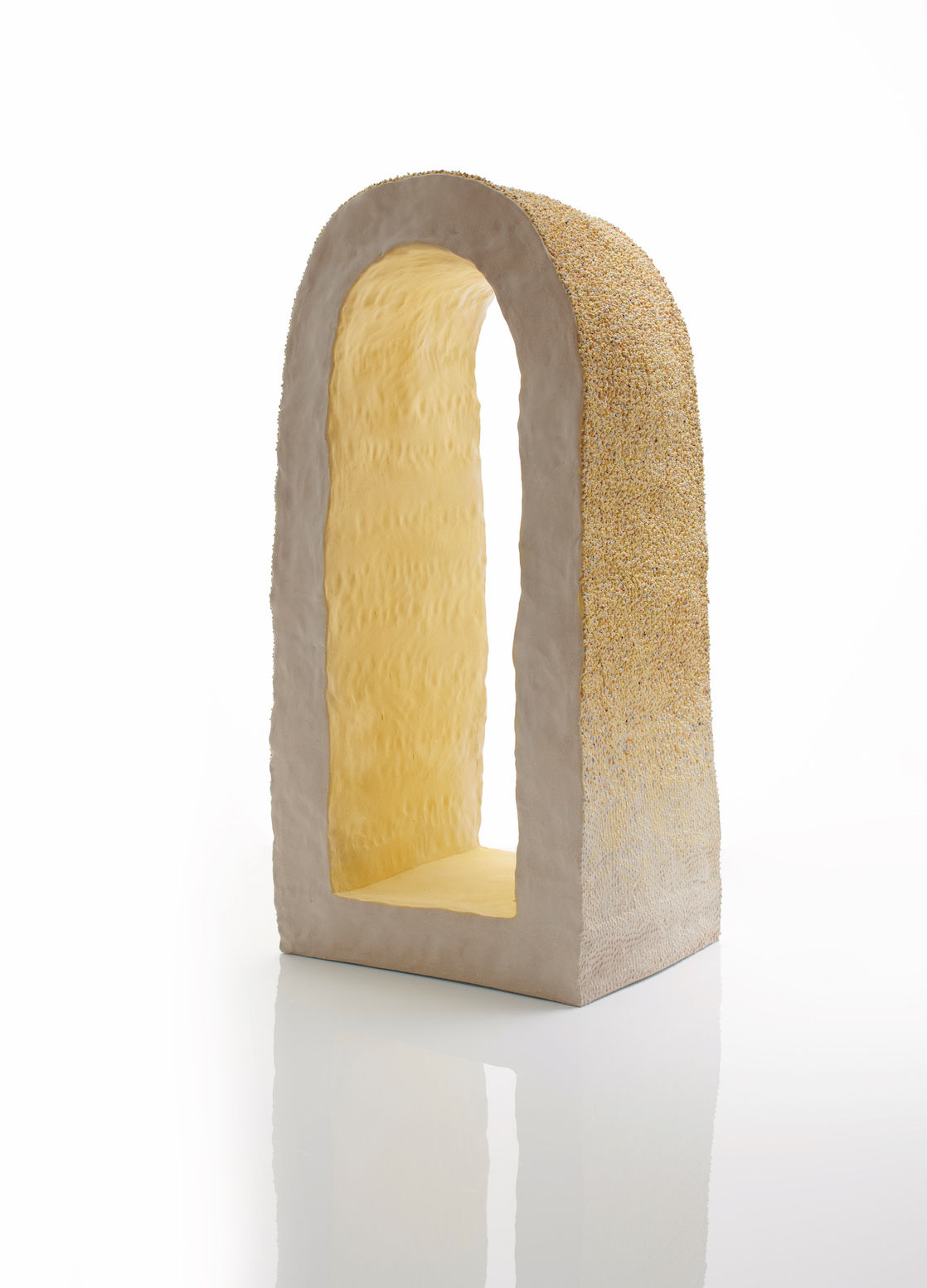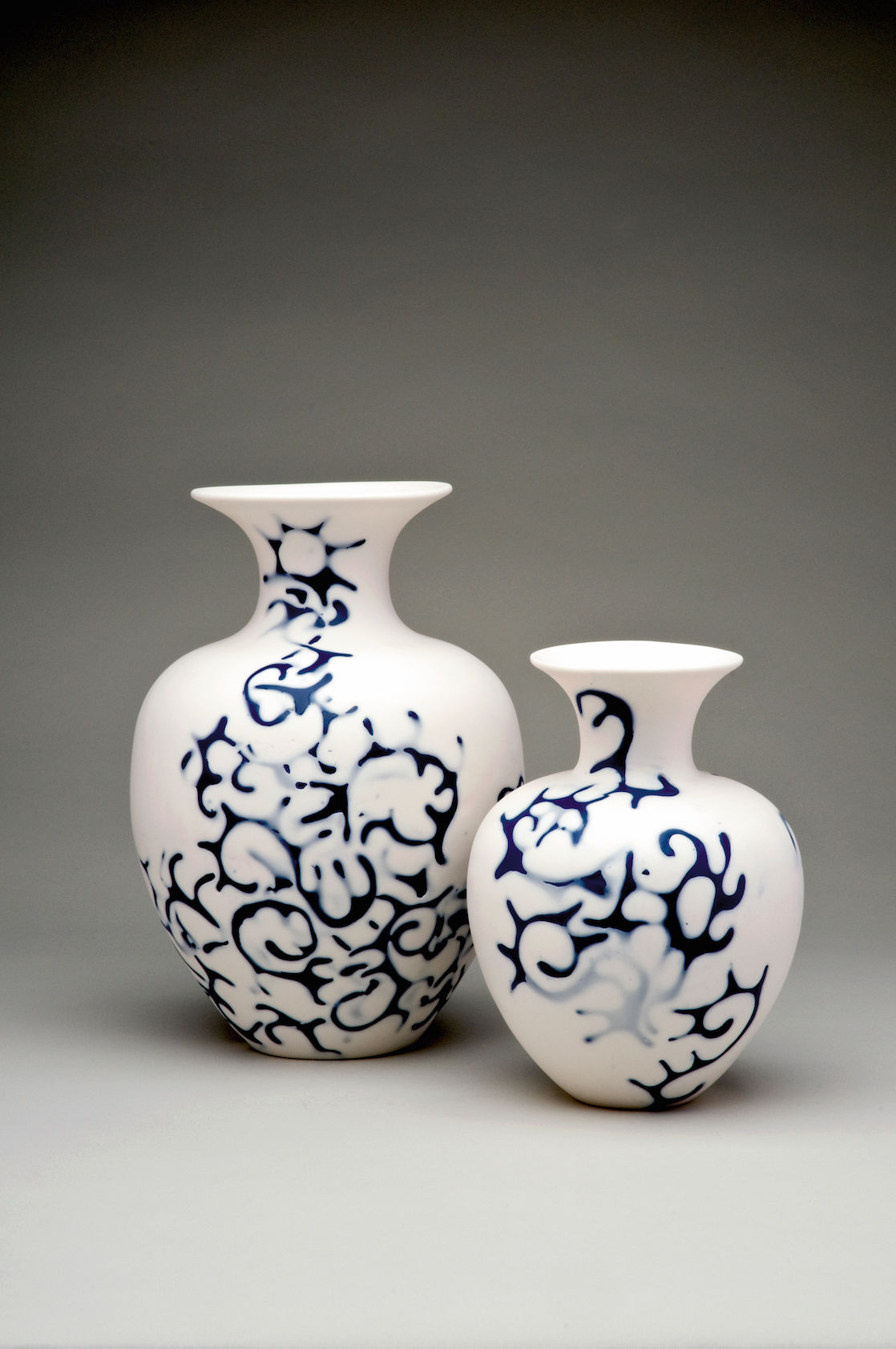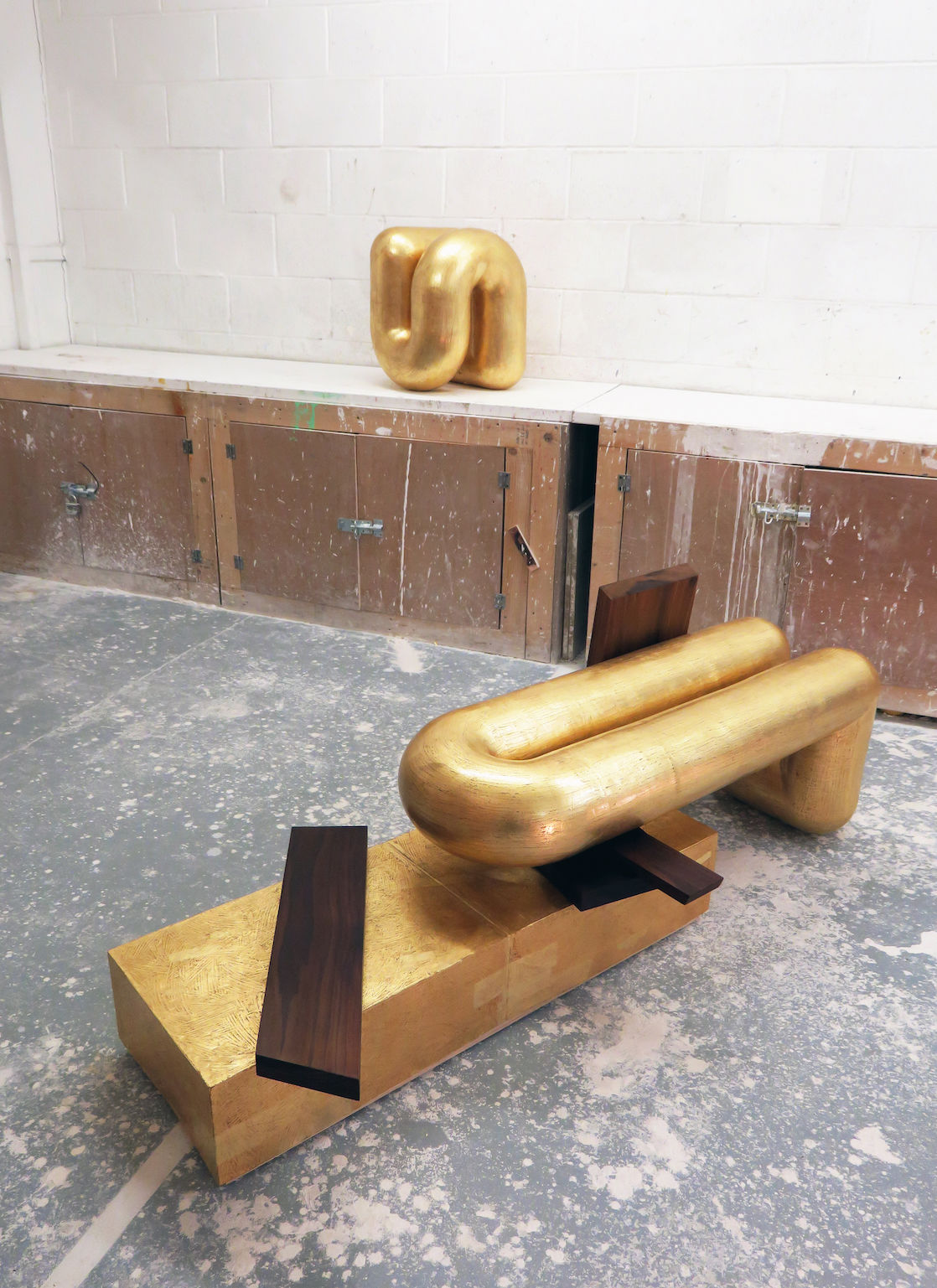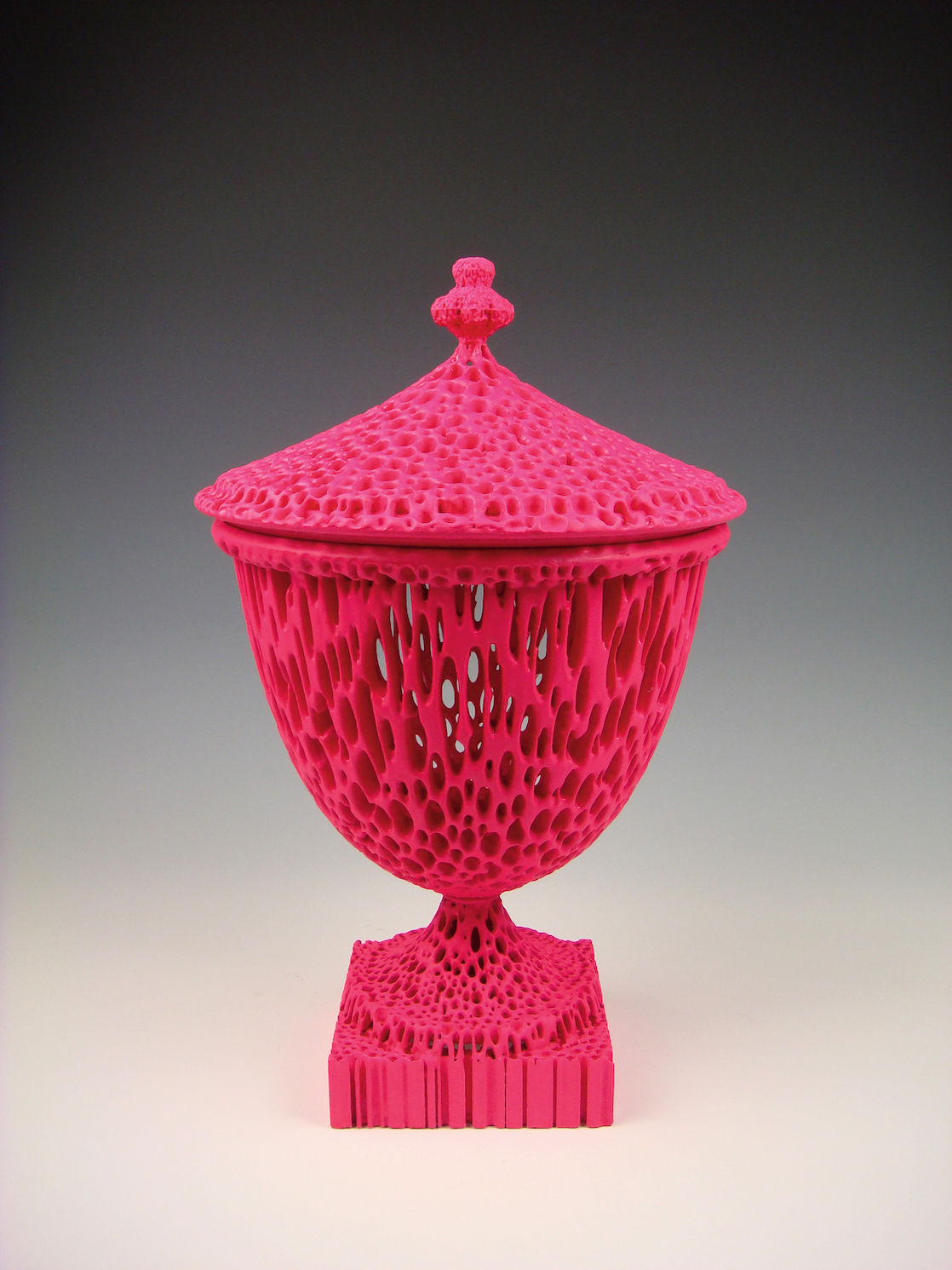Welcome to Ceramic Review
Ceramic Review is the magazine for contemporary and historical ceramics, ceramic art and pottery.
Ceramic Review Issue 334
July/August 2025
Ceramic Review is the magazine for contemporary and historical ceramics, ceramic art and pottery.
July/August 2025
Future Heritage at Decorex is a platform for craft to make an impact on the world of interior design. Curator Corinne Julius explains the aims of the show and why ceramics have been a key element since its inception

Clements Lane, 2019, Alice Walton, H62.5cm. Photographer © Sylvain Deleu 2019 all rights protected.
The most Instagrammed work in last year’s Future Heritage at the interiors exhibition Decorex, was the
wall installation by Kaori Tatebayashi based on flowers growing in the show’s surroundings at Syon Park. Given the beauty and intricacy of Tatebayashi’s work it was hardly surprising, but what might confound pessimists in the world of ceramics, is that her installation outsold severalfold that of other makers working in media such as textiles, metals, recycled plastics, digital technology and glass. For many in the ceramics world, selling to interior designers and architects is ever so slightly naff, but it is the marketing opportunity for those involved in making, so such snobbism is misplaced. The interiors market, which intersects with the art and collecting markets, appreciates ceramics on more than a purely functional basis or at the very least, for the function of being beautiful or interesting.
PROMOTING MAKING
Having spent a large part my professional life visiting the studios of extremely talented makers, including many ceramists, I have always found it distressing that such talent rarely receives appropriate financial reward. Despite writing and broadcasting about making, I wanted to find another way of giving back to an area that has always afforded me so much intellectual stimulation, physical appeal and aesthetic delight. Seven years ago in Milan, during the city-wide Salone di Mobile design festival, I was seated next to the then brand director of Britain’s oldest, most distinguished and successful interiors show – Decorex. I harangued my co-guest on how the exhibition failed to highlight the best of contemporary making to its affluent visitors, who had enormous powers of patronage, but relatively little knowledge about contemporary craft. Some nine months later, I re-ran my attack and was told: ‘Just get on with it, contemporary craft curated by you is now the central feature of the show.’
Future Heritage came into being and Decorex allowed me to put their money where my mouth is. The idea is to encourage the show’s wealthy visitors and their architects and designers to commission for specific projects. Though not originally intended as a selling show, Future Heritage has attracted buyers, galleries and collectors. The intention is also to encourage makers to work on projects on a larger and more ambitious scale. Ceramics have been well represented.
‘The interiors and architectural market is a place of huge potential for ceramists, but it requires makers to be adventurous, push their materials and learn to collaborate’
The first year included ceramists as diverse as Hitomi Hosono, Michael Eden, Amy Jayne Hughes, Adam Nathaniel Furman and Felicity Aylieff. 2015 saw Tanya Gomez, Katharine Morling, Merete Rasmussen and Carina Ciscato, while 2016 extended the range to Katie Spragg, Ashraf Hanna, Alicja Patanowska, Tamsin van Essen and Vezzini & Chen. Their success ensured places for Matt Davies, Ilona Broeseliske, Lauren Nauman, Zachary Eastwood-Bloom and David Marques in 2017, and Studio Glithero and Kaori Tatebayashi in 2018. This year sees ceramics by Alice Walton, James Rigler and Studio Furthermore.
FUELLING INTEREST
I believe ceramics have been successful at Future Heritage, in part because of the British predilection for them, with a strong understanding of the discipline and a collecting habit. Ceramics can play with scale, form, colour and texture; all important to interior designers. Site-responsive pieces, where ceramists have taken elements of the local environment as the starting point for their work, have also helped to fuel interest in ceramics for the interior.

Work by Tamsin van Essen, 2016

Stool and bench, 2019, James Rigler
While real buildings or environments are restrictive, they also offer new unexpected possibilities. This is clearly of interest to interior designers and architects, keen to bring something special and unexpected to their projects. In 2016, Katie Spragg based her pieces on plants in Syon Park, and Tamsin van Essen explored the ceramics in the house, creating a suite of blue and white vessels. This year Decorex has moved to Olympia and James Rigler has investigated the building to produce his new, monumental, gilded, ceramic furniture.
Ceramics can play with scale, form, colour and texture; all important to interior designers.
‘Work made for a particular real-world site is a Trojan horse, smuggling meaning into spaces where we might least expect it, drawing whole rooms (or whole buildings) into their orbit and changing how we relate to even the most ordinary places,’ Rigler explains. ‘For this year’s Future Heritage in Olympia, there’s so much to respond to, particularly the muscular, cast-iron frame of the building, the dense layering of engineering and decoration in the structure’s finer details. These spaces seem to oscillate between weightlessness and monumentality; the great glass roofs hang above us effortlessly, yet there is a proud exhibitionism in the monumental Olympian engineering holding them up. Where the building leads, I’ve tried to follow. The furniture and lighting I’ve been building is similarly pared-back and beefed up, with the arched geometries of Olympia becoming curious, over-scaled domestic objects. Like re- purposed relics from forgotten industrial processes or fragments of illegible architectural decoration, they wear their function lightly and embrace a collision of materials and forms.’
Alice Walton has also responded to the curving Olympia roof by experimenting for the first time with wall tiles. ‘I began looking at aerial views of Olympia as a vertical plane. I noticed the roofing and loved how its half-cylinder roof curves and snakes the shape of the building. I started drawing and designing how this might be transformed into a ceramic tile, which would be adaptable to form different shapes,’ she explains.
For Alice this was new and challenging and is changing her practice, something as curator, I am keen to foster. ‘I decided early on that I wanted to make wall tiles for this project,’ Alice adds. ‘This is out of my comfort zone and would push my making abilities, but I wanted to create something that was new, exciting and could transform a room without being reliant on a surface or space. Wall tiles can be made to commission, allowing the client to specify the formation or shape to match the desired location. I have also developed a colour swatch box of porcelain tiles that clients can use to match the colour of their interior. I feel my customers would value their home, want it personalised and filled with objects that are made with care and passion.’ Alice neatly sums up what visitors to the show want and a way in which ceramists can develop this market.
POTENTIAL MARKETS
Wall installations are attractive to designers. David Marques created a range of flexible wall objects, and Matt Davies a series of tiles. Last year Studio Glithero created tiles based on weeds growing near their studio, this year Studio Furthermore has created Tektites, their first collection of foamed ceramic pieces using parian slip. Lighting too is an important use of ceramics in interiors. Vezzini & Chen created two lighting installations in 2016 and Cristina Vezzini produced her largest ever carved ceramic vessels. This playing with scale by ceramists such as Felicity Aylieff, Ashraf Hanna and Studio Glithero, has been a feature of Future Heritage that appeals to interior designers. The interiors and architectural market is a place of huge potential for ceramists, but it requires makers to be adventurous, push their materials and learn to collaborate. It entails the education of makers, specifiers and buyers, which is what Future Heritage sets out to do.
For further details visit decorex.com/future-heritage. This article is taken from Ceramic Review issue 300 (November/December 2019). For more, subscribe below.

Wedgwoodn't Tureen, 2016, Michael Eden